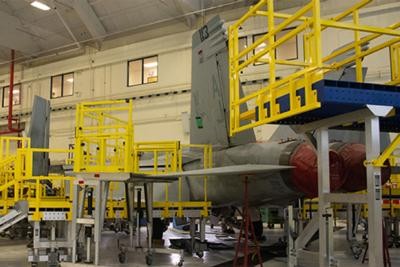Tue, Feb 21, 2023
Once Again, "They Don't Make 'em Like They Used To"
The Congressional Budget Office published its findings comparing the availability and use of the Navy’s F/A-18E/F Super Hornet with its preceding F/A-18C/D Hornets, and found the newer birds wanting.

The Office particularly looked at availability and effective uptime, a shorthand to see just how much use the taxpayer actually gets out of their fancy new jets compared to the outgoing ones. Overall, the Office found that "availability rates by fiscal year are lower and declined faster for both types of Hornets than for the rest of the Department of the Navy’s Fleet."
Second, the Super Hornets were found to "have aged more adversely than their predecessors," comparing unfavorably at 10 years of age compared to the older first-gen Hornet. Perhaps more painful was the note that "Super Hornet availability at age 10 was about 18 percentage points lower than F/A-18C/D availability at age 10 and is comparable to F/A-18C/D availability at age 20."

They note that flying hours can't quite account for the variance in availability. Aside from "modestly exceeding" flying hours in the "initial years of operation of both fleets", the Super Hornet has been flying 4 hours less per month than their equivalently-aged Hornets did.
Perhaps offering a bandaid, the Office added a hopeful note that "availability rates of Super Hornets may stabilize or continue to decline," citing possibilities of increasing maintenance budgets or modifications to improve uptime in the future. They just as quickly come back down to Earth, however, saying "the experiences of the oldest super Hornets suggest that their availability is likely to continue to decline as the fleet ages."
One interesting tidbit hides out within the body of the text, blaming some of the drop in availability on “increased levels of galvanic corrosion arising from the greater use of composite metals in Super Hornets”. It’s unsurprising, given the weight constraints of modern aircraft, but a troublesome aspect to have in a fighter that lives at sea.
More News
Aero Linx: The American Society of Aerospace Medicine Specialists (ASAMS) The Society is a non-profit organization created to serve as a voice for and represent the professional ne>[...]
Class C Service This service provides, in addition to basic radar service, approved separation between IFR and VFR aircraft, and sequencing of VFR aircraft, and sequencing of VFR a>[...]
Have A Story That NEEDS To Be Featured On Aero-News? Here’s How To Submit A Story To Our Team Some of the greatest new stories ANN has ever covered have been submitted by our>[...]
Also: ERAU Uses UAVs, P550 Group 2 UAS, Starship’s Florida Launches, NASA Missions Chopped The Air Force has put out a call to commission a one-to-one copy of the Iranian-des>[...]
Classic Klyde Morris From 11.07.16 (and Remembering Bob...) FMI: www.klydemorris.com>[...]
 ANN's Daily Aero-Linx (08.27.25)
ANN's Daily Aero-Linx (08.27.25) ANN's Daily Aero-Term (08.27.25): Class C Service
ANN's Daily Aero-Term (08.27.25): Class C Service ANN FAQ: Submit a News Story!
ANN FAQ: Submit a News Story! Airborne-NextGen 08.26.25: Iran UAV Knockoffs, X-37B Spaceplane, Army Training
Airborne-NextGen 08.26.25: Iran UAV Knockoffs, X-37B Spaceplane, Army Training Classic Klyde Morris (08.25.25)
Classic Klyde Morris (08.25.25)




